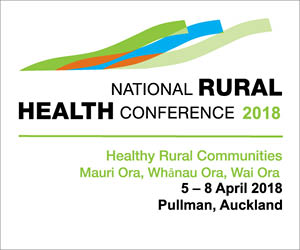Nearly 1280 of the bumper 1359 new nurses who graduated in November 2016 took part in the annual graduation destination survey by NETS (Nursing Education in the Tertiary Sector).
The survey found that on average 73.3 per cent (996) of the November graduates were working as nurses by March 31* – a nearly identical rate to last year’s NETS survey. Of these 813 reported working in government-subsidised NETP (nursing entry to practice) and NESP (mental health) programmes, a further 174 were nursing in non-NETP jobs in the private sector (mostly in aged care but also primary health) and nine were nursing overseas.
Nearly 250 of the new graduates responding to the survey (246 or 18% of the November cohort) reported they were still hunting for a nursing position at March 31, a further 37 reported they were not seeking a nursing position and 80 (nearly 6%) didn’t take part in the survey.
The annual NETS survey also included a breakdown of the graduate employment rates for the 16 schools that also reflect the number of NETP placements offered through the schools’ local district health boards. Only eight of the degree programmes had all of their November graduates respond to the survey – other programmes were missing data from between a couple to up to 23 students – which also affected the findings.
Graduate employment rates reported by survey respondents in the Northern region were 87.8% for NorthTec, 64.4% for AUT, 55.6% for the University of Auckland, 77.8% for Manukau Institute of Technology (83.3% for its BN Pacific programme), 91.3% for Massey University’s Albany programme and 75% for Unitec.
In the middle of the North Island the reported job rates were 67.3% for Waikato’s WINTEC, 76% for Toi Ohomai Institute of Technology (formerly Waiairiki), 92.7% for Taranaki’s WITT, 65.9% at UCOL, 87.1% for Massey’s Manawatu programme and 67.3% for EIT. In Wellington the job rates were 66.3% for Massey’s Wellington programme and 59.4% for Whitireia (42% for its BN Pacific).
The South Island once again had one of the highest employment rates with 77.8% at NMIT, 94.5% at Ara Institute of Canterbury (formerly CPIT), 83.8% at Otago Polytechnic and 77.3% at Southland’s SIT.
The NETs survey indicated that once again that the most common area to get work was in medical or surgical wards followed by aged care/continuing care elderly, primary health (including practice nursing) and acute mental health. The most common sector for graduates to find work in non-mentored NETP programmes was aged care/continuing care elderly – with 87 graduates employed in non-NETP places compared to 34 who gained places in aged care NETP programmes. This is a nearly identical trend to last year with the nurses union NZNO stating last year that number of new graduates being employed by rest homes with no guaranteed mentoring was an ‘ongoing concern’.
The next most common area in non-NETP programmes was primary health with 41 finding non-NETP places compared to 51 employed in NETP places.
*The NETS March 31 data differs from the March 1 job statistics released by the ACE new graduate placement programme as NETS surveys only November graduates and because it captures graduates who find jobs outside of the NETP and NESP offered through ACE, including jobs overseas. The ACE March 1 statistics indicated 1274 of the 1455 graduates graduates who applied through ACE for NETP or NESP positions were November graduates. In total 853 (60%) of all ACE applicants (which also included July 2016 and November 2015 graduates) were reported as being successful in finding NETP or NESP places by March 1.




















